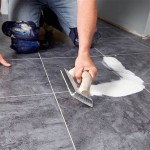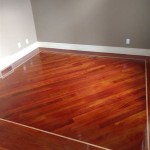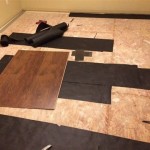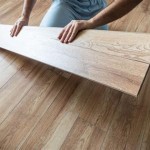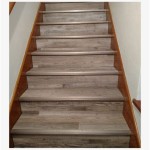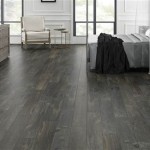What To Use To Get Paint Off Wooden Floor
Dried paint spills on wooden floors are an almost inevitable consequence of home improvement projects. While a fresh coat of paint can revitalize a room, accidental drips and splatters can quickly detract from the beauty of the wood underneath. Removing paint from wooden floors requires a careful approach, considering the type of paint, the type of wood, and the finish on the floor. Choosing the right tools and methods is crucial to avoid damaging the wood while effectively removing the paint.
The choice of materials and techniques for removing paint from a wooden floor hinges on several factors. The type of paint – whether it is latex, oil-based, or acrylic – significantly impacts the removal process. Latex paint, being water-based, is generally easier to remove than oil-based or acrylic paints. The age of the paint stain also plays a crucial role. Fresh paint is far easier to remove than paint that has been allowed to dry and cure for an extended period. Furthermore, the type of wood floor, its finish, and its overall condition must be considered. Softwoods are more susceptible to damage than hardwoods, and a delicate finish requires a gentler approach.
Before undertaking any paint removal method, it is essential to prepare the area. This involves protecting adjacent surfaces with drop cloths or masking tape to prevent further accidental staining. Good ventilation is also critical, especially when working with solvents or chemical strippers. Wearing appropriate personal protective equipment (PPE), such as gloves and eye protection, is essential to safeguard against potential irritants or hazardous materials. A test spot in an inconspicuous area is always recommended to assess the effectiveness of the chosen method and to ensure it doesn't damage the wood finish.
Key Point 1: Mechanical Removal Methods
Mechanical removal methods involve physically scraping or sanding the paint off the wood surface. These methods are best suited for small, isolated paint splatters or for situations where chemical strippers are undesirable. However, mechanical removal requires a delicate touch and careful execution to avoid causing scratches or gouges in the wood.
One common mechanical method involves using a plastic putty knife or scraper. Plastic tools are less likely to damage the wood compared to metal ones. The edge of the scraper should be held at a low angle and gently pushed under the edge of the paint splatter. Applying gentle pressure, carefully lift the paint away from the wood. Avoid forcing the scraper, as this can cause damage to the wood fibers. If the paint is particularly stubborn, a heat gun (used with extreme caution) can be employed to soften the paint before scraping. However, heat can also damage the wood or its finish, so careful monitoring and controlled application are essential.
Another mechanical method involves sanding. Sanding should be used as a last resort for localized areas and with extreme caution, especially on floors with a thin veneer or a delicate finish. Use fine-grit sandpaper (180-grit or higher) and sand very lightly, working with the grain of the wood. Frequent checks are necessary to avoid sanding through the finish and into the wood itself. A sanding block can help distribute the pressure evenly and prevent gouging. After sanding, the area will likely need to be refinished to match the surrounding floor.
A razor scraper can be used for particularly stubborn paint spots, but it requires a steady hand and a lot of caution. Use a holder designed for razor scrapers and hold the blade at a shallow angle. Gently scrape away the paint, being careful not to dig into the wood. This method is best suited for small, isolated spots and should only be attempted by those with experience using such tools.
Key Point 2: Chemical Paint Strippers
Chemical paint strippers are designed to soften the paint, making it easier to remove. These strippers come in various formulations, including solvent-based and water-based options. Solvent-based strippers are generally more effective at removing tough paints, such as oil-based and acrylic paints, but they can also be more hazardous and require better ventilation. Water-based strippers are generally safer and less odorous, but they may not be as effective on all types of paint.
When using a chemical paint stripper, it is crucial to follow the manufacturer's instructions carefully. Apply the stripper liberally to the affected area, ensuring that the paint is thoroughly saturated. Allow the stripper to dwell for the recommended time, which can vary depending on the product and the type of paint being removed. The paint should begin to soften and blister. Use a plastic scraper to gently remove the softened paint. Avoid using metal scrapers, as they can scratch the wood.
After removing the paint, it is essential to neutralize the stripper according to the manufacturer's directions. This usually involves washing the area with a specific neutralizing solution or mineral spirits. Failing to neutralize the stripper can interfere with the adhesion of subsequent finishes. Allow the floor to dry completely before proceeding with any further treatment.
There are considerations for using chemical strippers around baseboards and other painted surfaces you want to keep intact. Carefully apply painter's tape to protect these areas. Using a small brush, carefully apply the stripper only to the paint on the floor, avoiding any contact with the taped-off areas.
Key Point 3: Natural and Homemade Solutions
For those seeking a more environmentally friendly approach, several natural and homemade solutions can be attempted. While these solutions may not be as potent as chemical strippers, they can be effective for removing fresh or less stubborn paint splatters, especially latex paint.
One simple solution involves using warm water and dish soap. Mix a small amount of dish soap into warm water and apply it to the paint stain. Allow the mixture to soak for a few minutes to soften the paint. Then, use a soft cloth or sponge to gently scrub the area. This method is most effective for fresh latex paint spills.
Another option is to create a paste of baking soda and water. Apply the paste to the paint stain and let it sit for several minutes. The baking soda acts as a mild abrasive, helping to lift the paint from the wood. Gently scrub the area with a soft cloth or sponge. Be sure to rinse the area thoroughly with clean water after scrubbing.
Vinegar can also be used to soften paint. Soak a cloth in white vinegar and apply it to the paint stain. Let it sit for several minutes to allow the vinegar to penetrate the paint. Then, use a plastic scraper to gently remove the softened paint.
Mineral spirits can be effective, but it is advisable to test it in an inconspicuous area first, especially on finished floors. Mineral spirits can dissolve certain finishes, so use it sparingly and carefully. Apply it with a cloth, let it sit for a short period, and then wipe it away.
After using any of these natural or homemade solutions, it is important to thoroughly clean and dry the area. Depending on the solution used, you may need to apply a wood cleaner and conditioner to restore the wood's natural oils and shine. Always test any cleaner or conditioner in an inconspicuous area before applying it to the entire floor.
Regardless of the method chosen, patience and careful execution are key to successfully removing paint from wooden floors without causing damage. After removing the paint, it may be necessary to refinish the affected area to blend it seamlessly with the surrounding floor. This might involve sanding, staining, and applying a new coat of finish. Consulting with a professional floor refinisher is advisable for extensive or complex projects.

How To Remove Paint Off Hardwood Floors Safely

Don S Room Progress How To Remove Paint From Wood Floors At Home With Ashley

Easily Remove Paint From Your Floors

How To Remove Old Paint From A Wooden Floor Esb Flooring

Does Wd 40 Remove Paint From Hardwood Floors Mr Sander

How To Remove Paint From Hard Wood Floors

Easiest Ways To Clean Paint Stains From Your Hardwood Floors

How To Get Paint Off Wood Floors Sawdust Girl

Life On Elizabeth How To Remove Paint Splatter From Wood Floors

Don S Room Progress How To Remove Paint From Wood Floors At Home With Ashley
See Also

